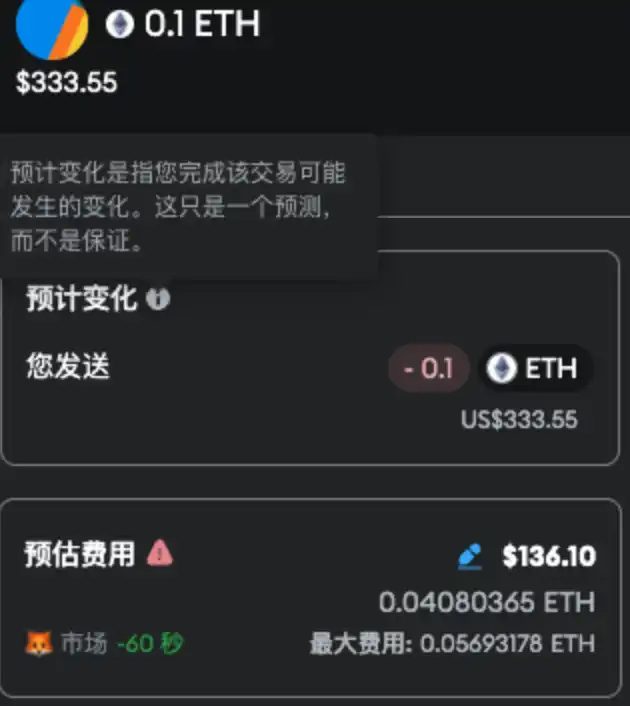What is DeFAI (Decentralized Finance Artificial Intelligence)?
Original Title: "What Is DeFAI (Decentralized Finance Artificial Intelligence)?"
Original Author: Sankrit K
Compiled by: Scof, ChainCatcher
Key Points:
Since the advent of artificial intelligence agents, "crypto" and "AI" have become buzzwords and headlines for everyone. Together with blockchain technology, they form an innovative triad that could shape the technological landscape of this decade.
Mark Zuckerberg predicts that there will be more AI agents than humans in the future. Blockchain is the ideal environment for these AI agents to thrive—permissionless, trustless, tamper-proof, and transparent.
DeFAI—the fusion of decentralized finance and artificial intelligence—is a new crypto narrative that uses AI to bridge the accessibility gap in decentralized finance (DeFi).
This article will explore the narrative of DeFAI in detail and outline some popular projects innovating in this niche.
DeFAI (Decentralized Finance + Artificial Intelligence) is a way to integrate artificial intelligence (AI) into decentralized finance (DeFi) systems, aiming to enhance efficiency, accessibility, and user experience.
DeFi is a paradigm that fundamentally rethinks how financial systems and investment tools operate. It is entirely trustless and free of intermediaries; this is nearly impossible to achieve in most traditional financial scenarios.
However, one drawback of DeFi is that its technical complexity is overwhelming for the average user, and the learning curve is steep.
For many, the empowerment promised by DeFi is often overshadowed by the challenges of managing risks, interpreting complex data, and staying ahead in a 24/7 market. Users often find themselves confused: how can they fully leverage the potential of DeFi without getting lost in its complexities?
On the other hand, artificial intelligence (AI) has already demonstrated significant potential in simplifying decision-making and optimizing processes across various industries.
Thus, the overarching goal of DeFAI is to apply AI-based solutions to DeFi projects, abstracting technical details to make on-chain interactions more user-friendly for non-technical users.
DeFAI can provide real-time insights, automate trading, personalize strategies, and facilitate efficient decision-making, all without requiring users to bear the burden of technical details.
A common feature of current DeFAI-based applications is that users can perform complex DeFi operations through simple, human-like commands without deep technical knowledge.
In the narrative of crypto and artificial intelligence, several categories have emerged. Due to their similarities, most people struggle to distinguish between them. The differences often lie in subtle nuances that only become apparent upon closer examination.
AI Meme coins typically rely on hype without substantial functionality; crypto AI agent projects usually target specific use cases; whereas DeFAI takes an approach that makes the on-chain financial ecosystem more accessible to the masses.
The table below can help you better understand these differences.
At first glance, DeFAI and intent-centric blockchains or projects may seem similar, as they both focus on improving user experience and system efficiency.
However, upon deeper analysis, DeFAI and intent-based architectures are fundamentally different. They differ in design philosophy, implementation methods, and the scope of problems they address.
On the surface, both DeFAI and intent-centric blockchains aim to simplify user experience and enhance the efficiency of the blockchain ecosystem. They both attempt to abstract the complexity of on-chain interactions, allowing users to focus on desired outcomes rather than intricate technical details.
But the similarities end there.
Currently, DeFAI primarily uses machine learning algorithms and large language models to simplify interactions between humans and blockchains. On the other hand, intent-centric blockchains focus on the concept of "intent," where users express their expected outcomes, and the system typically employs a "solver" to find the best path to achieve that goal.
You can think of the solver as a specialized module in an intent-centric blockchain that translates user intents into executable on-chain actions. For example, if a user wants to swap tokens or transfer assets across chains, the solver determines the optimal path based on factors like gas fees, slippage, and liquidity, and executes the corresponding transaction.
DeFAI, however, addresses the problem differently. It does not focus on the infrastructure needed to execute intents but rather leverages AI to help users make better decisions before execution. The AI models in DeFAI analyze on-chain data, predict market trends, and recommend actions based on user goals (e.g., selecting the best liquidity pool to provide liquidity or optimizing asset allocation for yield farming).
It is important to emphasize that when considering the recommendations of DeFAI agents, users still need to conduct their own research.
Let's take token swapping as an example to see how each approach handles it.
Intent: Cross-chain token swap
DeFAI would use AI algorithms to provide real-time suggestions for the user:
Step 1: The user inputs, "I want to swap 1 ETH for USDC."
Step 2: DeFAI analyzes on-chain data, including DEX prices, liquidity pools, gas fees, and bridging costs.
Step 3: It suggests the best route, such as swapping ETH for USDC on Uniswap via Ethereum and then bridging USDC to Polygon to reduce gas fees.
Step 4: The user executes the suggested transaction through a semi-manual method or via the connected wallet interface.
Here, DeFAI acts as a smart assistant, helping the user make informed decisions while leaving the final execution control to the user.
Intent-centric blockchain, the process is more automated:
Step 1: The user inputs, "Swap 1 ETH for USDC."
Step 2: The system captures the intent and passes it to the solver.
Step 3: The solver determines the best path, which may involve splitting the transaction across multiple DEXs, utilizing Rollup to reduce costs, or combining the swap and bridging into a single operation.
Step 4: The blockchain executes the transaction on behalf of the user, sending USDC to their wallet without further input.
Here, the user interacts only at the intent level.
AI excels at learning from input data (training sets) and generating tailored outputs. If this data includes your trading history, investment patterns, and risk tolerance, DeFAI applications can create highly personalized financial strategies.
For example, suppose an AI-driven DeFi application analyzes your on-chain activity and finds that you frequently interact with stablecoins. Based on this, it might recommend high-yield stablecoin staking platforms.
Projects like Mozaic Finance are already working in this direction, helping users dynamically allocate funds to maximize returns and manage risks.
Staking is a popular (and mostly safe) way to earn guaranteed returns by staking assets. However, these returns are only guaranteed if the validator you delegate to is honest and performs well. Choosing the wrong validator can lead to reduced rewards or, in some cases, penalties like "slashing."
Selecting one from numerous validators is a challenging task, and naturally, this is a problem that can be handed over to AI.
DeFAI applications like HeyElsa can analyze multiple validators upon request, assessing important metrics such as uptime and reputation. For example, if a user asks HeyElsa to stake their assets, the system intelligently compares validators and selects the one that best matches the user's preferences.
With thousands of tokens on each blockchain, tracking investments has become increasingly complex for retail crypto investors. Brief trends, meme tokens, and airdrops often lead to over-diversified portfolios, making asset management difficult.
DeFAI addresses this issue by introducing natural language portfolio management, allowing users to interact with their portfolios as easily as sending messages.
Imagine you simply indicate your needs to the application—like "Show me the best-performing tokens this month" or "How many assets in my wallet are worth less than $1"—and the application outputs easy-to-understand, accurate results.
Platforms like HeyElsa and Griffain have achieved this functionality by combining AI and blockchain. They can interpret user commands, analyze on-chain portfolios, and execute requests on DeFi protocols in a chat-like interface.
Similarly, SoDAS (Solana DeFi Agent Swarm) integrates messaging platforms like Telegram and Discord, enabling users to manage their portfolios through conversational interactions.
Trading cryptocurrencies requires a strong mindset. Even if your strategy is well thought out, emotions often take over when it comes time to act—this is a common issue for most investors.
Watching momentary price fluctuations can often lead to impulsive decisions. DeFAI applications can largely eliminate emotional biases by automating trading strategies around specific goals, or even completely remove them.
Platforms like Loomix on LogX are leading the way in this area. Users can define specific financial goals, such as "Sell 50% of my ETH if the price drops below $3500 to minimize losses, or sell at $4000 to lock in profits," and then Loomix's AI algorithms will automatically execute these strategies.
Another example is Aspis, which offers AI-driven liquidity pools customized according to specific financial goals. For instance, you can instruct the system to allocate funds for a 20% return while setting a 5% risk cap. The AI agents within Aspis dynamically adjust these strategies to adapt to market fluctuations and optimize performance in real-time.
Here is a list of 8 DeFAI projects (in no particular order), along with brief descriptions and some of their key features.
DeFi + AI redefines the relationship between autonomy and automation. Unlike intent-centric protocols that prioritize outcome-driven automation, DeFAI retains human decision-making power by acting as a smart advisor rather than an executor.
The most challenging implication of DeFAI lies in its potential to humanize blockchain.
DeFAI has the potential to catalyze a new era where blockchain transcends its traditional niches by embedding intelligence into its infrastructure. The ultimate test will be whether DeFAI can scale without sacrificing the core principles of decentralization, a challenge that requires resilience in terms of the transparency of AI training, accountability of recommendations, and resistance to algorithmic monoculture.
While DeFAI can provide users with a more efficient and convenient way to engage with decentralized finance, always ensure to conduct thorough research before investing any capital.
Ethereum faces a wave of liquidations, the Solana ecosystem's meme trend weakens, when will the turning point in the crypto market arrive?
Original Title: "Solana Breaks Record, Ethereum in Crisis -- When Will the Turnaround Come?"
Source: BlockBlick
Compiled by: Yuliya, PANews
After months of intense fluctuations in the crypto market, the latest episode of the "BlockBlick" podcast provides a detailed analysis of recent dynamics in the crypto market, particularly the performance of Ethereum and Solana, as well as the future direction of the entire cryptocurrency market. PANews has provided a written compilation of this episode.
Recently, the Ethereum market has experienced significant volatility, setting a historical high for daily liquidation volume. According to Coinglass data, the liquidation volume for Ethereum's long and short positions in a single day exceeded that of previous major events, including the FTX collapse and the Three Arrows Capital crisis. Market sentiment is extremely low, with short positions in Ethereum on the CME futures market also reaching new highs, indicating a lack of confidence among investors. Nevertheless, some investors are taking advantage of the price pullback to position themselves, with over $300 million flowing into Ethereum-related ETFs this week.
Despite the weak price, Ethereum's technical ecosystem is steadily developing:
However, low gas fees also reflect a decline in Ethereum network usage, with a slowdown in ecosystem activity. Since the merge, Ethereum has entered an inflationary state for the first time, with the current supply of Ethereum exceeding pre-merge levels, indicating an increase in the number of Ethereum tokens circulating in the market. Observing the Ultrasound Money chart, it can be seen that Ethereum's deflationary trend had persisted for years, but since the emergence of Layer 2 scaling solutions, which reduced reliance on the main chain, the amount of Ethereum being burned has decreased, leading to a gradual return of Ethereum's supply to an inflationary state.
However, compared to Bitcoin, Ethereum's inflation rate remains relatively low, expected to fluctuate between -1% and +1% in the future. Therefore, although the market expresses concerns, this fluctuation is anticipated and does not imply a threat to the long-term health of the Ethereum ecosystem.
It is worth noting that only 1% of Bitcoin miners' income in the past week came from transaction fees, with the remainder primarily relying on block rewards. Given Bitcoin's halving mechanism every four years, if mainnet transaction volumes do not significantly increase, miners' income may face challenges in the future.
In contrast to Ethereum's challenges, Solana is showing strong momentum. Although its price has fallen from a historical high of $250 to $202, the decline is relatively moderate. The Solana network recently achieved an important milestone: it has operated for a full year without major outages, which is significant in its development history. Particularly in the past 35 days, even amid peaks such as the Meme coin craze and the launch of Trump meme coins, the network has remained stable.
According to Artemis data, Solana is far ahead in terms of daily active addresses:
These developments may impact the competitive landscape of the cryptocurrency market. While Ethereum maintains a lead in enterprise-level applications and tokenization of physical assets, Solana's advantages in performance and user activity cannot be overlooked. This competitive dynamic offers market participants a more diversified range of investment options.
The recent activity in the Solana ecosystem has partly benefited from the popularity of Memecoins, particularly driven by the Pump.fun platform. Data shows that this platform generates about 70,000 new tokens daily, with a total reaching 7.5 million. According to CoinMarketCap, the total number of tokens issued is close to 11.04 million, indicating a significant market share for Pump.fun.
However, the Meme coin craze has also brought some negative effects: a large influx of funds into the Memecoin market has led to reduced attention on other projects, dispersing market funds. Additionally, many investors have incurred losses due to the high speculation of Memecoins, further weakening market confidence. This presents a significant challenge for the current cryptocurrency market: despite a large influx of funds, most are directed towards short-term, high-risk investments, lacking projects with long-term sustainable development. In this process, while some projects like Bitcoin and Solana have shown stable growth, others struggle to generate meaningful value. This situation places the entire market in a precarious state, especially for Ethereum, which remains a leader among projects with long-term value.
Despite Solana's progress in technical stability, on-chain activity has recently declined. Data shows that the number of active addresses on Solana and the trading volume of Memecoins have both retreated from their peaks, indicating a waning enthusiasm for Memecoins in the market. The launch of Trump Meme coins is considered the peak of this craze, but as speculative fervor diminishes, Solana needs to seek new growth drivers. Additionally, the activity of Base and other blockchains has shown similar declines, indicating a reduction in retail participation across the entire crypto market.
Meanwhile, Bitcoin's network activity has also shown similar weakness, with overall blockchain activity experiencing a downturn. A significant issue in the current market is that many investors seem to have lost their enthusiasm for cryptocurrencies, especially in the absence of sufficient "cheap capital," lacking large-scale market incentives. Due to macroeconomic factors such as interest rate hikes, demand for risk assets has decreased, leading to underperformance in the crypto market.
Historically, periodic bubbles and downturns are common phenomena in the cryptocurrency market. During periods of low market sentiment, it is often the time when new entry opportunities arise. Currently, we are in a relatively negative market sentiment phase, with declining market activity; however, this may precisely signal a potential rebound in the future. As the Crypto Fear and Greed Index illustrates, when the market is in a state of fear, it is often a time when opportunities may arise in the long run. At this point, investors may begin to reposition themselves, and market sentiment could shift towards the positive.
The main issue in the current market lies in the interest rate environment. A true altcoin bull market, the so-called "altcoin season," can only occur when people can access low-cost capital. However, in this cycle, due to U.S. interest rates remaining high at around 4.5%, the market has not seen this situation.
In terms of market liquidity, from last November to January 20 during Trump's presidency, billions of dollars in stablecoins flowed daily into cryptocurrency exchanges like Binance and Coinbase. However, this strong momentum has weakened, and while positive inflows are still maintained, the momentum has clearly declined and may even turn negative.
Regarding future trends, the market is primarily focused on the Federal Reserve's policy direction. Currently, U.S. inflation remains relatively high, and the Federal Reserve is not yet prepared to cut interest rates, which somewhat limits market development and delays the arrival of a true altcoin season.
The next Federal Reserve interest rate decision will take place on March 18-19. Trump is actively pushing for interest rate cuts, which is one of his key policy agendas. Only when market funds are abundant can businesses thrive and venture capital become active. Trump has strongly criticized the decision to maintain interest rates on January 29, but rate cuts still face challenges until inflation issues are fully resolved.
From the data, U.S. inflation rates are nearing the target level of 2%. Since June 2022, inflation rates have been on a downward trend, although there have been some stalls during this period, the overall downward trend continues. The market expects a 92% probability of the Federal Reserve cutting rates in March, which is a strong expectation. However, some believe that Trump's tariff policies may lead to a rebound in inflation, although this impact may be limited to specific goods and will take time to reflect in the data.
The decline in oil prices is crucial for controlling inflation, and Trump is vigorously promoting increased domestic oil production. Additionally, the weakness of the dollar also provides favorable support for Bitcoin prices. Therefore, from the data perspective, this stage may be a good entry point.
Although the fundamentals are improving, the market currently faces many uncertainties, including the specifics of tariff policies and potential responses from China and the EU. These uncertainties put pressure on the market, but this situation will not last forever.
Many significant changes are occurring in the market. While not all issues have been resolved, some progress is still noteworthy:
Overall, the cryptocurrency industry is undergoing unprecedented fundamental changes:
The current market cycle is indeed longer than previous ones, and there are ample reasons for this:
From a positive perspective, the economy's ability to withstand the current high interest rate levels is itself a healthy sign. This indicates that the economic fundamentals remain robust, laying the foundation for future sustainable development.
The current market environment is vastly different from the past. If policies are overly loose, it may trigger a new wave of inflation in the long run, which is clearly not the outcome the market desires.
For market participants, it is crucial to remain calm and rational. Currently, it is necessary to:
Maintaining a cautious and calm investment mindset is more important than ever. Market dynamics will continue to update, and it is essential to remain vigilant and strictly control risks.
🚨🔐
$ANLOG is the native token of..
$ANLOG is the native token of the Analog network, a layer-0 blockchain aiming to enhance cross-chain interoperability and data sharing. Analyzing the potential profit and loss (P&L) associated with trading and holding $ANLOG requires considering several factors:
Trading $ANLOG:
* Volatility: Cryptocurrency markets are highly volatile, and $ANLOG is no exception. Price swings can be significant, offering opportunities for traders to profit from short-term fluctuations. However, this volatility also carries the risk of substantial losses.
* Liquidity: The liquidity of $ANLOG on exchanges will influence trading ease and potential slippage. Higher liquidity generally leads to tighter bid-ask spreads and less price impact from large trades.
* Market Sentiment: Overall market sentiment towards cryptocurrencies and layer-0 solutions like Analog will impact $ANLOG's price. Positive news, partnerships, or adoption can drive demand and price appreciation, while negative news or market downturns can lead to losses.
* Technical Analysis: Traders may use technical analysis tools and indicators to identify potential entry and exit points for $ANLOG trades. However, technical analysis is not foolproof and should be used in conjunction with other forms of analysis.
Holding $ANLOG:
* Long-Term Growth Potential: The success of the Analog network and its adoption by developers and users will be crucial for the long-term value of $ANLOG. If Analog achieves its goals of facilitating cross-chain communication and data sharing, the demand for $ANLOG could increase, leading to potential price appreciation for holders.
* Staking and Rewards: Analog may offer staking opportunities for $ANLOG holders, allowing them to earn passive income by locking up their tokens. This can be an attractive option for long-term holders.
* Ecosystem Development: The growth and development of the Analog ecosystem, including the launch of decentralized applications (dApps) and partnerships, can positively impact the value of $ANLOG.
* Risks: Holding $ANLOG carries risks, including market volatility, regulatory uncertainty, and the potential failure of the Analog network to achieve its goals.
P&L Considerations:
* Entry and Exit Points: For traders, the timing of buying and selling $ANLOG will significantly impact P&L. Buying low and selling high is the goal, but accurately predicting market movements is challenging.
* Holding Period: For holders, the length of time they hold $ANLOG will influence their overall returns. Long-term holding may be more suitable for those who believe in the long-term potential of the Analog network.
* Fees: Trading fees and potential gas costs for transactions on the Analog network should be factored into P&L calculations.
* Tax Implications: Depending on the jurisdiction, profits from trading or holding $ANLOG may be subject to capital gains taxes.
$ANLOG


 Giá thấp nhất
Giá thấp nhất Giá cao nhất
Giá cao nhất 


















































Dữ liệu mạng xã hội Gas
Trong 24 giờ qua, điểm tâm lý mạng xã hội của Gas là 3 và tâm lý mạng xã hội đối với xu hướng giá Gas là Tăng giá. Điểm mạng xã hội tổng thể của Gas là 0, xếp hạng 753 trong số tất cả các loại tiền điện tử.
Theo LunarCrush, trong 24 giờ qua, tiền điện tử được đề cập trên các mạng xã hội tổng cộng 1,058,120 lần, trong đó Gas được đề cập với tỷ lệ tần suất là 0.01%, xếp hạng 366 trong số tất cả các loại tiền điện tử.
Trong 24 giờ qua, có tổng cộng 656 người dùng duy nhất thảo luận về Gas, với tổng số lượt đề cập đến Gas là 67. Tuy nhiên, so với 24 giờ trước đó, số lượng người dùng duy nhất đã tăng 53% và tổng số lượt đề cập đã giảm 18%.
Trên X, có tổng cộng 1 bài đăng đề cập đến Gas trong 24 giờ qua. Trong số đó, 0% cho rằng Gas sẽ tăng giá, 100% cho rằng Gas sẽ giảm giá và 0% tỏ ra trung lập đối với Gas.
Trên Reddit, đã có 2 bài đăng đề cập đến Gas trong 24 giờ qua. So với 24 giờ trước đó, số lượt đề cập đã giảm 0%.
Tất cả tổng quan xã hội
3